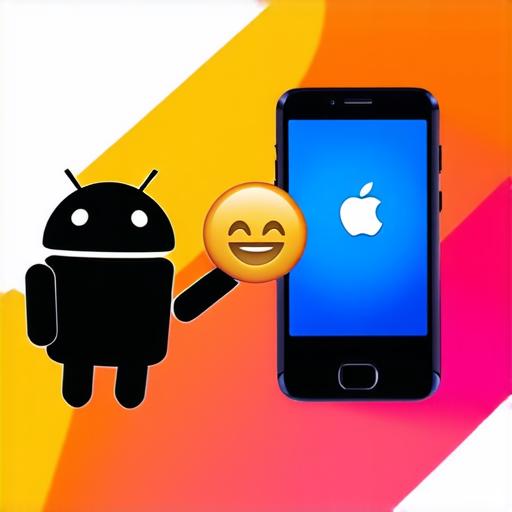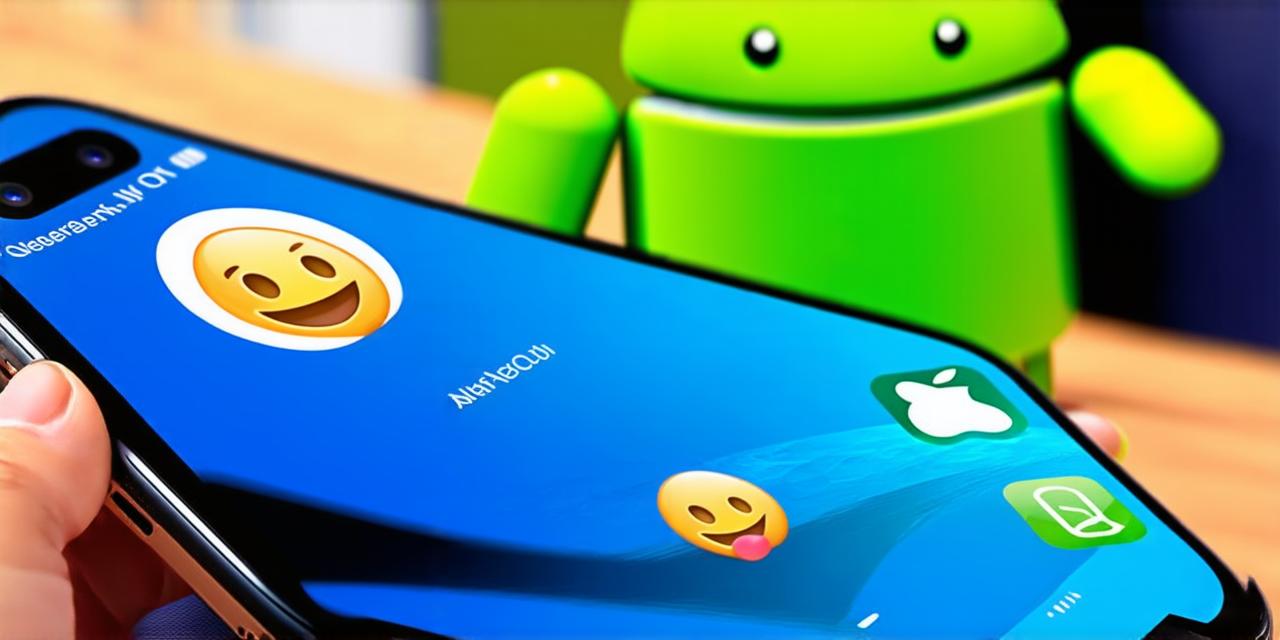Emojis have become an integral part of our daily communication, and their popularity continues to grow. They are used to convey emotions, expressions, and reactions in a simple yet effective way. However, many people believe that emojis can only be used on iOS devices. In this article, we will explore how iOS emojis can be used on an Android device.
The Benefits of Using Emojis in Mobile Applications
Emojis are often overlooked in mobile application development, but they have the potential to greatly enhance user experience. They provide a quick and easy way for users to convey their emotions, add context to their messages, and make their communication more engaging. Here are some benefits of using emojis in mobile applications:
-
Improved User Experience: Emojis can help developers create a more immersive and enjoyable user experience. By incorporating emojis into their app’s interface, users will be more likely to engage with the content and stay on the app for longer periods of time.
-
Increased Engagement: Emojis are often used to increase engagement in social media platforms, and they can also be effective in mobile applications. By using emojis, developers can make their app’s interface more visually appealing and encourage users to interact with the content.
-
Better Communication: Emojis provide a simple and effective way for users to communicate their emotions and reactions. This can help improve communication between users and reduce the need for lengthy text messages or emails.
How to Use iOS Emojis on an Android Device
Now that we’ve discussed the benefits of using emojis in mobile applications, let’s explore how iOS emojis can be used on an Android device.
1. Download a Third-Party Keyboard
There are several third-party keyboards available for Android devices that allow users to access and use iOS emojis. Some of the most popular options include:
-
SwiftKey
-
Gboard
-
Fleksy
2. Enable the Emoji Keyboard
Once you have downloaded and installed a third-party keyboard, you will need to enable it as your default keyboard on your Android device. Here’s how:
-
Go to your device’s settings menu.
-
Tap on “Language & Input.”
-
Tap on “Default Keyboard.”
-
Select the third-party keyboard you just downloaded.
3. Access and Use Emojis
Once you have enabled the emoji keyboard, you can access and use iOS emojis in your Android device by pressing the emoji button. This will bring up a selection of emojis that are similar to those found on iOS devices. You can also customize the keyboard to include your own personalized emojis.
Comparing iOS and Android Emojis
While iOS and Android emojis are not identical, they do share many similarities. However, there are also some key differences between the two:
-
Unicode Standard: The Unicode Standard is a universal character encoding system that is used to represent emojis on both iOS and Android devices. While iOS emojis tend to have more detailed and expressive designs, Android emojis often use simpler, bolder designs.
-
Customization Options: iOS devices offer more customization options for emojis, including the ability to change their appearance and add new emojis. Android devices also offer some customization options, but they are not as extensive as those available on iOS devices.
-
Emoji Compatibility: While most emojis are compatible with both iOS and Android devices, there are some instances where this is not the case. This can be particularly problematic in cases where an emoji is used in a way that has a different meaning or context on one platform compared to another.
Case Studies
Let’s look at some real-life examples of how iOS emojis have been used successfully on Android devices:
1. Snapchat

Snapchat is a popular social media platform that has made extensive use of emojis in its interface. The app uses a selection of emojis that are similar to those found on iOS devices, and it also allows users to create their own custom emojis. This has helped the app become more engaging and immersive, and has contributed to its popularity among users.
2. WhatsApp
WhatsApp is another popular messaging app that uses emojis extensively in its interface. The app includes a wide range of emojis that are similar to those found on iOS devices, and it also allows users to create their own custom emojis. This has helped the app become more user-friendly and enjoyable to use, and has contributed to its popularity among users.
3. iMessage
iMessage is Apple’s default messaging app for iOS devices, and it includes a wide range of emojis that are unique to the platform. However, it is also possible to use iMessage on an Android device using a third-party app like Google Voice or Google Hangouts. While some emojis may not be available on Android devices, the app still allows users to communicate effectively and engage with each other through the use of emojis.
FAQs
1. Can I use iOS emojis on an Android device?
Yes, it is possible to use iOS emojis on an Android device by downloading a third-party keyboard that includes the emoji keyboard.
2. What are some popular third-party keyboards for Android devices that include iOS emojis?
Some popular options include SwiftKey, Gboard, and Fleksy.
3. How do I enable a third-party keyboard on my Android device?
Go to your device’s settings menu, tap on “Language & Input,” tap on “Default Keyboard,” and select the third-party keyboard you just downloaded.
4. Are iOS and Android emojis identical?
No, while iOS and Android emojis share many similarities, there are also some key differences between the two.
5. How do I customize an emoji on my Android device?
Most third-party keyboards allow users to customize their emojis by adding or removing emojis from the keyboard’s design.
Conclusion
In conclusion, iOS emojis can be used successfully on Android devices through the use of third-party keyboards. By incorporating emojis into their app’s interface, developers can create a more immersive and enjoyable user experience, increase engagement, and improve communication between users. As technology continues to evolve, we can expect to see more seamless integration between iOS and Android devices in the future.
